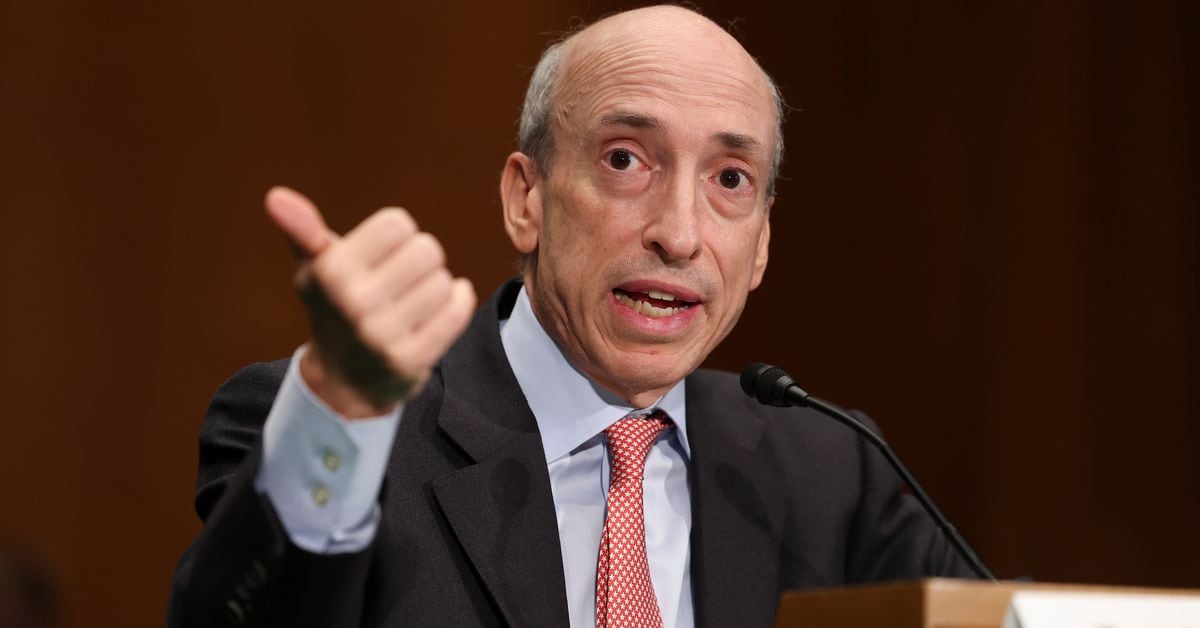March 2, 2023
Re: Prudential Impact of Staff Accounting Bulletin 121
Dear Vice Chair Barr, Chairman Gruenberg, Chairman Harper, and Mr. Hsu:
We write regarding Securities and Exchange Commission (SEC) Staff Accounting Bulletin 121 (“SAB 121”) published on April 11, 2022. SAB 121 was intended to clarify the accounting treatment of digital assets safeguarded by custodians, exchanges, and other platforms engaged in digital asset activities.1 However, SAB 121 places customer assets at greater risk of loss if a custodian becomes insolvent or enters receivership, violating the SEC’s fundamental mission to protect customers.
Our concern stems from SAB 121’s directive that companies recognize a liability and a corresponding offset on their balance sheets, measured at the fair value of the customer custodial digital assets.2 A recent decision in the Celsius bankruptcy, which classified all Celsius’ customers as unsecured creditors, and therefore at the back of the line to recover their assets, highlights the legal risk of effectively forcing customer custodial assets to be placed on balance sheet.3 Additionally, SAB 121 upends decades of precedent regarding the accounting treatment of custodial assets for banks, credit unions and other regulated financial institutions.
Federal Reserve Board Chair Powell noted this shift away from traditional custodial practices in testimony before the Senate Banking Committee on June 22, 2022.4 Typically, custodial assets receive off-balance sheet accounting treatment. This is largely because customers retain ownership of their custodial assets and financial institutions are not permitted to conduct proprietary trading with customer assets.5 As emphasized in comment letters, SAB 121 “deviates from existing accounting treatment of safeguarded assets held in a custodial capacity, which does not result in assets or liabilities reported on the custodian’s balance sheet.”6
Furthermore, the breadth of the “digital asset” definition in SAB 121 covers any “digital asset that is issued and/or transferred using distributed ledger or blockchain technology using cryptographic techniques.”7 The scope of assets covered by this broad definition, whether virtual currency, stablecoins, or even tokenized equities, is unclear. This is concerning because a more nuanced hierarchy for this asset class which considers the opportunities and risks of digital assets with different functions is necessary. For example, the Bank for International Settlements’ Prudential Treatment of Crypto Assets framework differentiates between various types of digital assets for bank capital purposes.8
Since SAB 121 purports to require banks, credit unions and other financial institutions to effectively place digital assets on their balance sheets, it would trigger a massive capital charge. This in turn is likely to prevent these prudentially regulated entities from engaging in digital asset custody. To the contrary, we should be encouraging prudentially regulated financial institutions, like banks and credit unions, to provide digital asset services precisely because they are subject to the highest standards of capital, liquidity, recovery and resolution, custody, cyber-security, and risk management.
In sum, the effect of SAB 121 is to deny millions of Americans access to safe and secure custodial arrangements for digital assets. For these reasons, please respond to the following questions regarding the impact of SAB 121 on banks, credit unions, and other financial institutions:
(1) Was your agency contacted by the SEC prior to the issuance of SAB 121? If so, please identify the staff members consulted by the SEC and provide copies of written feedback, if any, provided to SEC staff.
(2) Has the SEC indicated that it will modify or withdraw SAB 121 in light of widespread comments that the Bulletin is flawed?
(3) What are the legal and supervisory reasons off-balance sheet treatment of custodial assets has historically been the norm for banks and credit unions?
(4) Has your agency directed banks and other financial institutions within your jurisdiction to comply with the terms of SAB 121 for the purposes of capital adequacy, business plan change approvals, reporting and other supervisory matters? If not, do you plan to do so?
(5) Does SAB 121 conflict with your agency’s input regarding the Basel Committee on Bank Supervision’s Prudential Treatment for Crypto Asset exposures, in so far as the definition of “digital asset” under SAB 121 also encompasses Group 1a, Group 1b, and Group 2 digital assets under the Prudential Treatment framework?
(6) Do you agree that the capital charge for banks, credit unions, and other financial institutions under SAB 121 is prohibitive?
(7) Do you agree that SAB 121 potentially weakens consumer protection by preventing well-regulated banks, credit unions, and other financial institutions from providing custodial services for digital assets?
We would appreciate a response no later than March 16, 2023. Thank you for your attention to this matter.
Not sure if anything actionable will come of this, but it's probably worth watching as the birthing pains of the crypto markets going mainstream continue.

